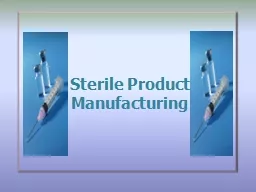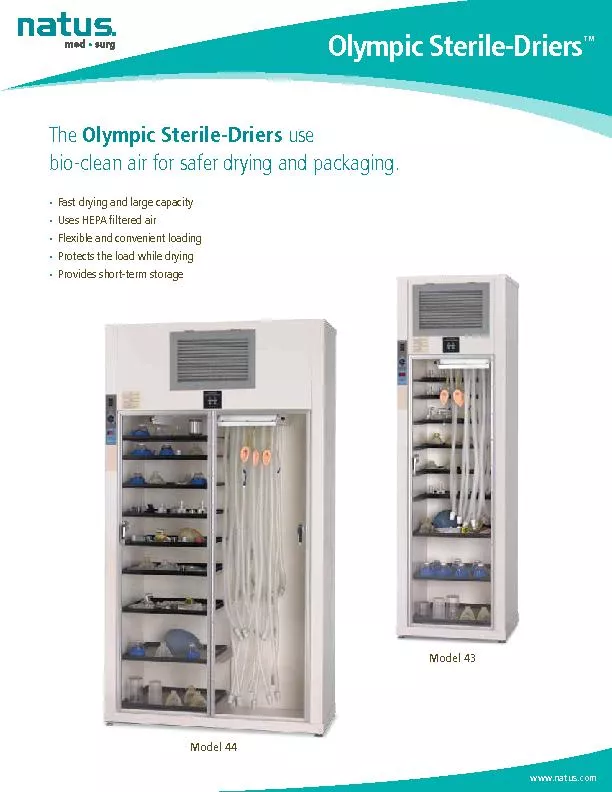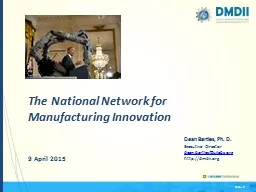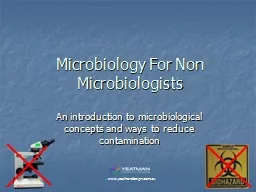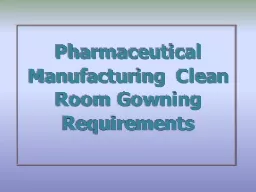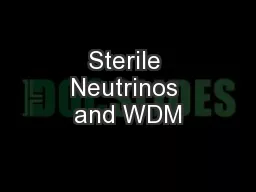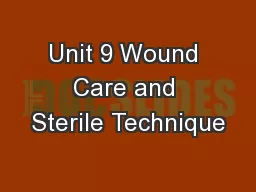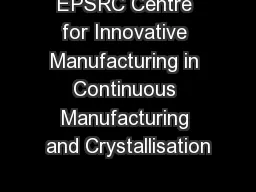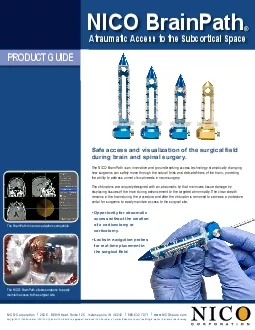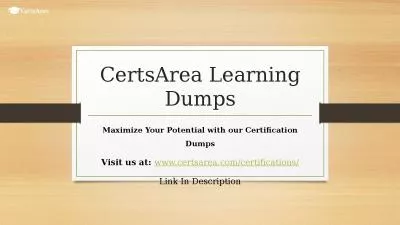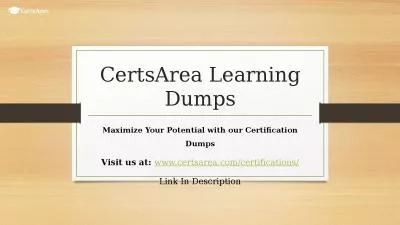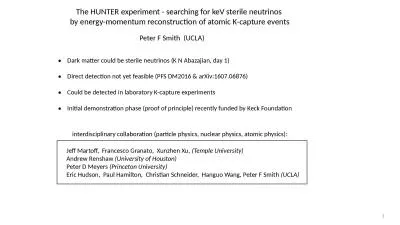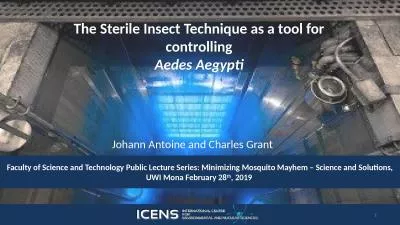PPT-Sterile Product Manufacturing
Author : pamella-moone | Published Date : 2016-07-20
Introduction To give an overview of the principles involved in the manufacture of sterile products The overall objective is to produce product that has a high assurance
Presentation Embed Code
Download Presentation
Download Presentation The PPT/PDF document "Sterile Product Manufacturing" is the property of its rightful owner. Permission is granted to download and print the materials on this website for personal, non-commercial use only, and to display it on your personal computer provided you do not modify the materials and that you retain all copyright notices contained in the materials. By downloading content from our website, you accept the terms of this agreement.
Sterile Product Manufacturing: Transcript
Download Rules Of Document
"Sterile Product Manufacturing"The content belongs to its owner. You may download and print it for personal use, without modification, and keep all copyright notices. By downloading, you agree to these terms.
Related Documents

